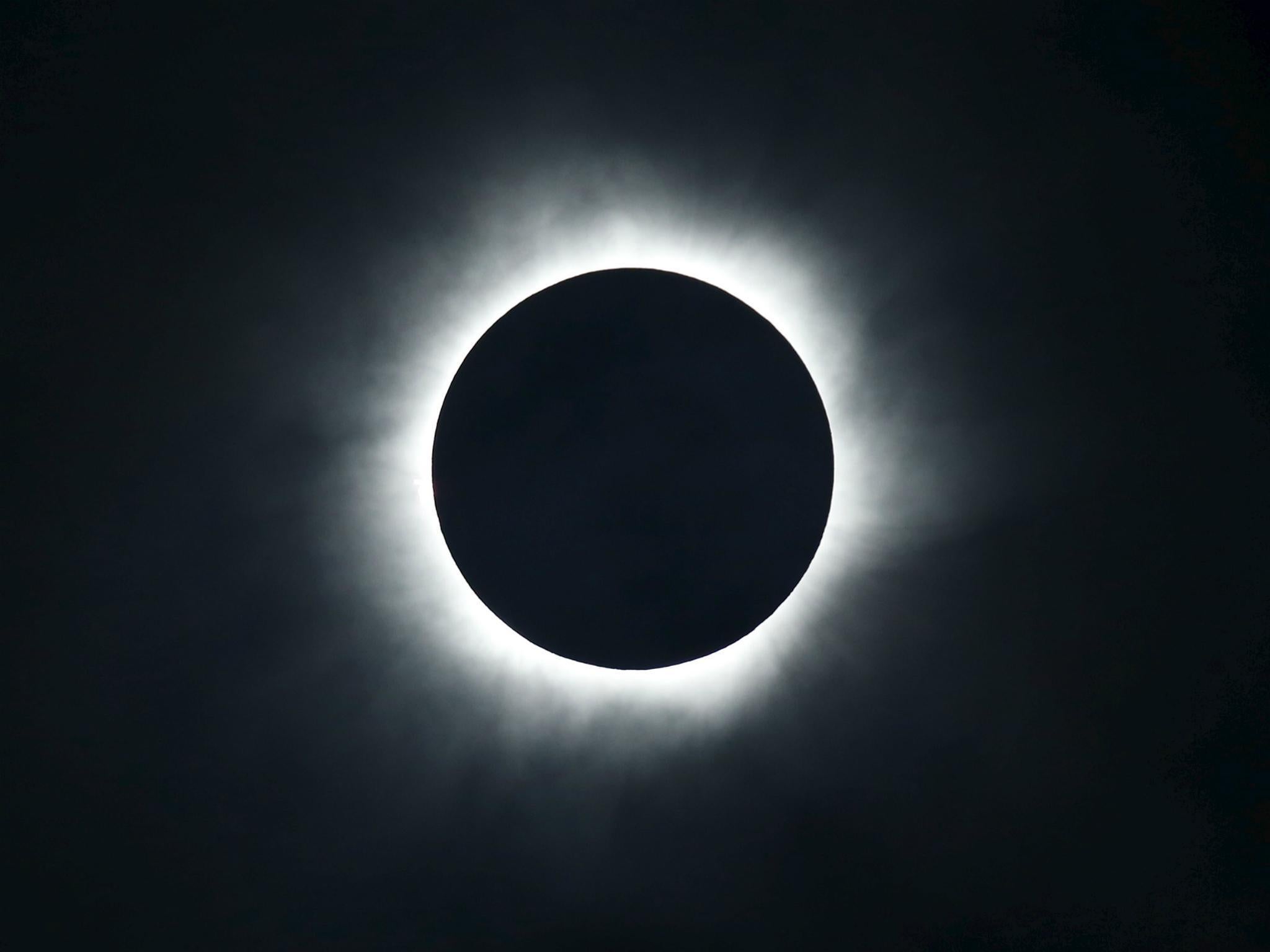Total Solar Eclipse 2017: Sun to disappear behind moon and leave parts of earth in darkness
It could affect local weather conditions and animal behaviour

Your support helps us to tell the story
From reproductive rights to climate change to Big Tech, The Independent is on the ground when the story is developing. Whether it's investigating the financials of Elon Musk's pro-Trump PAC or producing our latest documentary, 'The A Word', which shines a light on the American women fighting for reproductive rights, we know how important it is to parse out the facts from the messaging.
At such a critical moment in US history, we need reporters on the ground. Your donation allows us to keep sending journalists to speak to both sides of the story.
The Independent is trusted by Americans across the entire political spectrum. And unlike many other quality news outlets, we choose not to lock Americans out of our reporting and analysis with paywalls. We believe quality journalism should be available to everyone, paid for by those who can afford it.
Your support makes all the difference.People across North America will witness a rare total solar eclipse on 21 August.
In two months, the earth, moon and sun will momentarily align, casting a 70-mile wide shadow that will move across the US, from the west coast to the east coast.
The millions of people living within this ‘path of totality’ – and the millions of others expected to travel to a location on the strip – will see a total solar eclipse, where the moon completely blocks out the sun, leaving the solar corona visible.
The last time the entirety of the US witnessed a total solar eclipse was 99 years ago.
The earth and sky will be plunged into darkness for several minutes, and Nasa says the temperature on the ground will also change, which could affect local weather and animal behaviour.
People outside the path of totality in the US, as well as others in parts of Europe, including the UK, and South America and Africa, will be able to see a partial solar eclipse on the day, with the moon only covering a fraction of the sun.
In the UK, the partial solar eclipse will be visible from around 19:40 BST on 21 August.
It won’t be quite as dramatic as the total solar eclipse, but it will be an incredible spectacle nonetheless.
“Eclipse 2017 provides an incredible opportunity to engage the entire nation and the world, inspiring learners of all ages who have looked to the sky with curiosity and wonder,” said Steven Clarke, director of NASA’s Heliophysics Division in Washington.
The space agency says the path of totality will pass through 14 US states, including Oregon, Idaho, Wyoming, Montana, Nebraska, Iowa, Kansas, Missouri, Illinois, Kentucky, Tennessee, Georgia, North Carolina and South Carolina.
Anyone planning to watch the event is being warned to take precautions.
The only safe way to look directly at the uneclipsed or partially eclipsed sun is through special-purpose solar filters, such as eclipse glasses or handheld solar viewers, says Nasa, which adds that sunglasses aren’t protective enough.
However, it’s safe to look at the total eclipse with your naked eyes, but only during the period of totality.
“Never before will a celestial event be viewed by so many and explored from so many vantage points – from space, from the air, and from the ground,” said Thomas Zurbuchen, associate administrator of NASA’s Science Mission Directorate in Washington.
“With our fellow agencies and a host of scientific organizations, NASA will continue to amplify one key message: Take time to experience the Aug. 21 eclipse, but experience it safely.”
Join our commenting forum
Join thought-provoking conversations, follow other Independent readers and see their replies
Comments